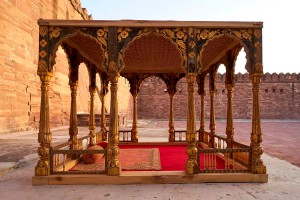
Apologies that there has been such a long gap between blogs! I’ve been in Indonesia, leading our annual textile tour. This blog is rather long, so grab a cuppa and settle down…..

I thought subscribers would be interested to read of the work that OATG members Chris Buckley and Sandra Sarjono (in collaboration with Enrico Kondologit and Yudha Yapsenang) have been doing on the weaving traditions of the Sobei people in Papua. Yarn is made from palm leaves and woven into a cloth called terfo on a backstrap loom.
The “yarn-making technique [of the Sobei] has importance for understanding how leaf fibers were processed before the arrival of cotton in the region. The foot-braced loom used by Sobei weavers is unique in the region and raises interesting questions concerning its origins.” – Fiber, Loom and Technique article.

Their article has excellent photographs, showing the various stages of yarn production, and diagrams showing how the loom is operated. The authors have kindly made this paper freely available in Fiber, Loom and Technique – The Journal of the Tracing Patterns Foundation here.
******************************
A new exhibition opened a couple of weeks ago at the Wereldmuseum in Rotterdam. Entitled Talking Threads, this exhibition showcases around two hundred embroideries, the majority of which come from the museum’s own collection, and runs until 22 October 2023.
It “focuses on the comprehensive significance of embroidery as decoration, as a cultural expression, as a language through which stories are told and as an expression of group and individual identity.” – Wereldmuseum website
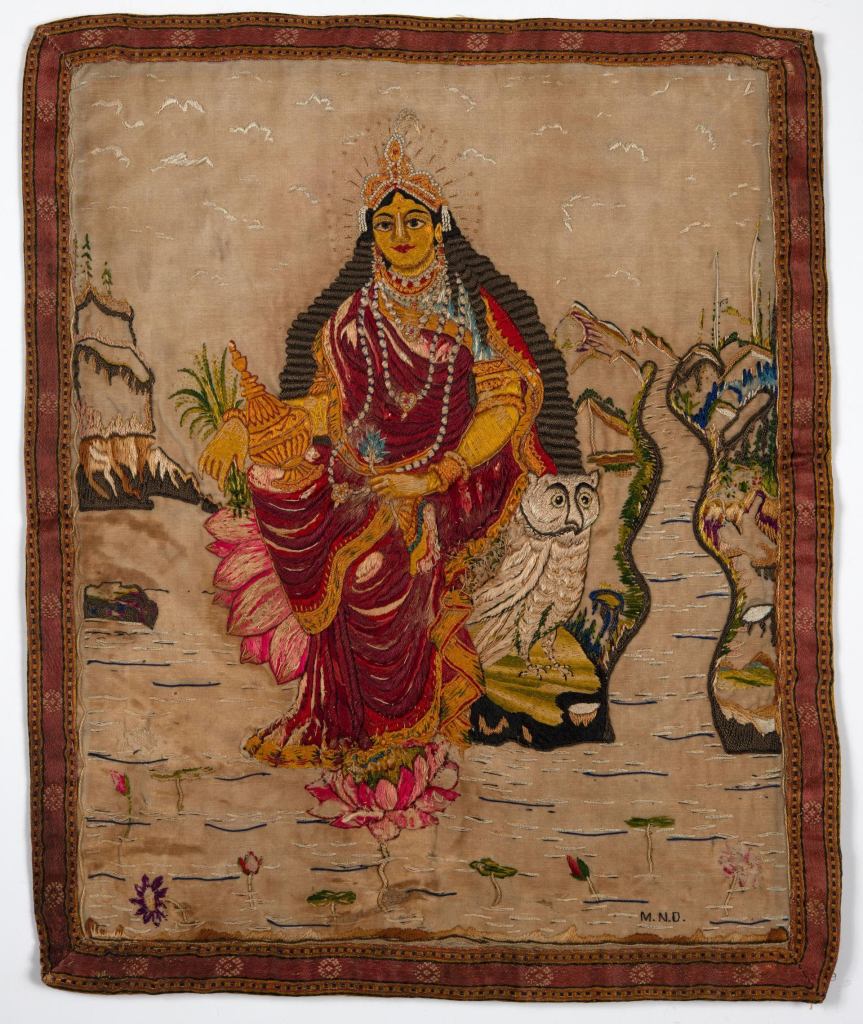
******************************
Another new exhibition of textiles that has just opened is at the Museum of Fine Arts in Houston. Entitled Woven Wonders: Indian textiles from the Parpia collection, this exhibition was co-curated by OATG member Rosemary Crilland runs until 4 September 2023.
“Assembled to reflect India’s myriad range of regional traditions, the Parpia Collection includes singular pieces that showcase the extraordinary aesthetic and technical diversity of Indian textiles. Ranging from folk textiles to sophisticated court textiles, the objects date from the 14th century to the early 20th century. The collection illustrates the preeminence of textile arts produced in India throughout history with examples of hand-painted and hand-block-printed cotton, embroidery, ikat, tie-dye, brocade, and tapestry.” – MFAH website
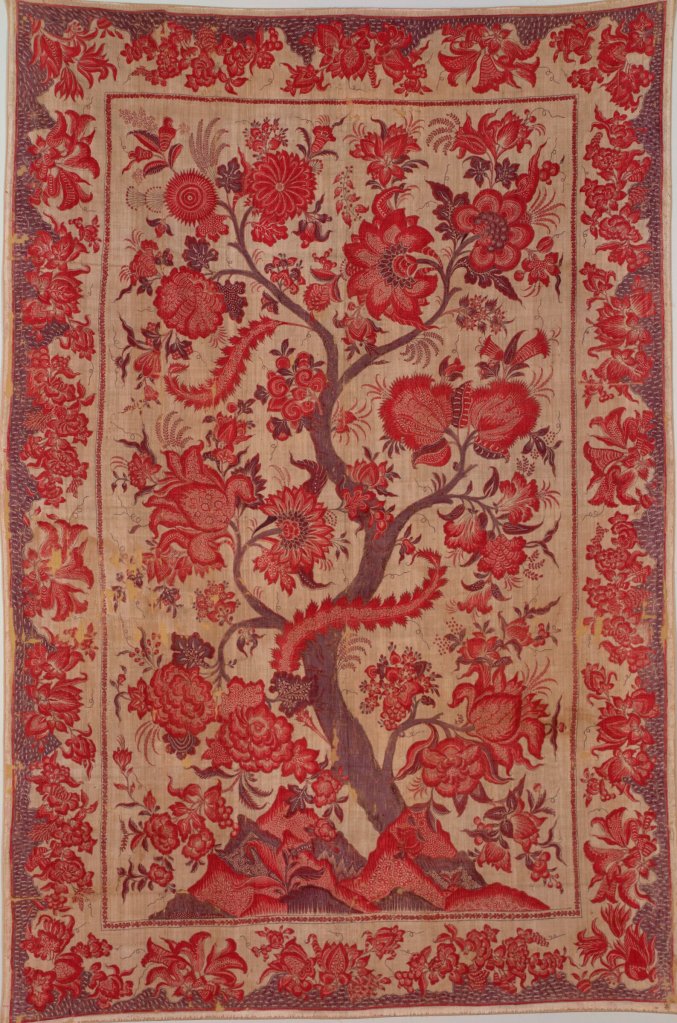
©The Banoo and Jeevak Parpia Collection
A multimedia guide is available here, with more information about several of the textiles, including detailed images, plus short videos on some of the techniques used in their creation.
******************************
A major new exhibition opened at the British Museum in London while I was away. China’s Hidden Century gives us new insights into late Imperial China between 1796 and 1912.
“Exquisite objects are brought together for the first time – from cloisonné vases, given by the Last Emperor’s court to King George and Queen Mary for their coronation in 1911, to a silk robe commissioned by the Empress Dowager Cixi. The show illuminates the lives of individuals – an empress, a dancer, a soldier, an artist, a housewife, a merchant and a diplomat.” – British Museum website.

Our Chair, Helen Wolfe, has already seen the exhibition and noted that it includes several very high-quality textiles.
The British Museum website always has great additional background material, and I particularly enjoyed reading the blog by the Organic materials conservators Misa Tamura and Monique Pullan on the challenges posed by specific items, including a straw rain cape.
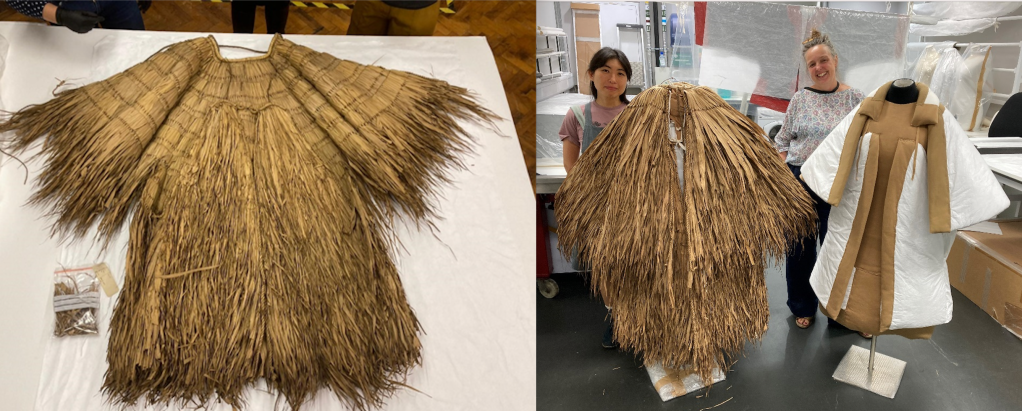
******************************
Contemporary Indian textiles are showcased in an exhibition currently showing at Melbourne Museum in Australia. Sutr Santati: Then. Now. Next. has been conceived and curated by Lavina Baldota of the Abheraj Baldota Foundation. Sutr Santati is a Hindi term which translates as ‘continuity of thread’. The exhibition has been scheduled to coincide with the 75th anniversary on Indian Independence, and features 75 specially commissioned textiles using a wide variety of techniques.
“Highlighting local varieties of cotton, muga and eri silk and yarn using camel, goat and yak hair – Sutr Santati is a must-see experience for anyone with an appreciation of textiles, art, culture and history. The deep and profound reverence that Indians have for handwoven textiles is evident through this creative/vibrant and contemporary interpretation of techniques with traditional yarns.” – Museum website

A symposium was held for the opening weekend in May, and three videos covering some of the talks are available here. The exhibition runs until 3 September 2023.
******************************
Two events related to Palestinian textiles are coincidentally taking place on 8 July, but on different continents. Material Power: Palestinian Embroidery opens at Kettle’s Yard in Cambridge, UK, and will explore the historical life and contemporary significance of Palestinian embroidery. It runs until 29 October 2023, and will also be shown in Manchester in 2024.
“Curated by Rachel Dedman, the exhibition looks at the ways in which embroidery, primarily undertaken by women, has evolved through a century of turbulent history for the Palestinian people.
This is the first major exhibition of Palestinian embroidery in the UK for over 30 years, with more than 40 dresses and embroidered objects on display lent from important private collections in Jordan and Palestine. Every dress tells a story: whether about the lives of women with their astonishing skills and creativity in the early decades of the last century, or the trauma of displacement as a result of the war of 1948. And reflecting the decades since: in which the vibrant colours and patterns of Palestinian embroidery, now often created for a global market by groups of women, have become symbolic of nationhood, memory, and resistance. Alongside historic dresses are artworks by five contemporary artists, films of embroiderers speaking about their work and rarely seen archive material.” – Kettle’s Yard website

An afternoon of talks and discussions about Palestinian embroidery, its history and importance today, has been organised for 8 July with the exhibition curator and collectors and experts from the region. Click here for more details and to book.
******************************
On the same day over in Washington DC there will be a launch at the Museum of the Palestinian People of the new book Thobna by curator Wafa Ghnaim, accompanied by a moderated discussion.
“THOBNA (Arabic for ‘our dress’) acknowledges the scholarship of Palestinian Elders that guided Ghnaim’s growth in the field. Representing a major turning point in her career that inspired her study of Palestinian dress history within an academic context, this book focuses on the path a Palestinian dress, or thobe, takes before arriving in a museum collection. Ghnaim details the ethics involved with Palestinian dress reclamation in the United States and the tremendous role museums can play in providing long-term viability for meaningful access to Palestinian dress collections.” – MPP website.
Click here for more information and to book your place.

The final curator-guided tour of the current exhibition of thoba, Tatreez Inheritance, takes place the previous evening, 7 July 2023, and you can book for it here.
******************************
The Early Textiles Study Group run 2-part courses on identifying textile structures, each part taking two weeks. Part 1 is on simple weaves, and Part 2 on complex weaves. The dates for the next Part 1 sessions are 10-14 and 17-21 July in Slaithwaite, West Yorkshire, with the Part 2 sessions taking place in late August. Click here for more details.
******************************
On 13 and 14 July a Textile Bazaar will be held at Hellens Manor near Ledbury in Herefordshire – a great chance to find a textile treasure to add to your collection. A list of exhibitors can be found here.

******************************
The next OATG event is an in-person talk in Oxford by Dr Rachel Silberstein. This was initially scheduled for 2020, so we are delighted we are finally able to hear her speak. Her subject is A Fashionable Century: Textile Artistry and Commerce in the Late Qing.
“This talk examines the expansion of commercialized dress and embroidery production during the late Qing period. With a focus on Suzhou, the center of fashionable dress production and embroidery, it shows how this city benefitted from the Gu embroidery trend, and how the expansion of commercial embroidery created networks of urban guilds, commercial workshops and subcontracted female workers. Though little attention was paid to these workers, objects of fashion reveal much about women’s participation—as both producers and consumers—in the commercialization of textile handicrafts. By reading objects of clothing and accessories from museum collections alongside pattern-books and advertisements, we will see how embroidery shops and accessory producers sought to brand and market their wares, and in turn, what these efforts tell us about the conflict of gender values inherent to the commercial production of dress and embroidery.” – Rachel Silberstein

As usual, this talk is free for OATG members (who should have already received their invitation), with a small charge for non-members. Click here for full details.
******************************
The Brunei Gallery at SOAS, London, will host a new exhibition from the Karun Thakar collection from 13 July to 23 September 2023. The subject of this exhibition is Japanese Aesthetics of Recycling, and it features over one hundred objects, including Boro and sakiori textiles, washi and kin-tsugi or gin-tsugi pottery.
“Boro (Japanese: ぼろ) is a class of Japanese textiles that have been mended or patched together. The term is derived from Japanese boroboro, meaning something tattered or repaired. Fashioned from worn clothing and ‘waste’ fabric to create ‘Boro’, the textile pieces have become very popular with collectors in Japan & throughout the world over the last 20 years. These pieces are often marketed as ‘abstract art’ in the Western context. They are in fact an important aspect of Japanese history and culture, showing the resilience and creativity shown by working people living in very harsh environment with very few resources.

Washi (handmade paper) was widely used in the Meiji & Showa period to make wrappings for valuable kimonos, tea storage bags, wrappers for documents as well as floor coverings and room dividers. Often old ledgers were recycled and layered to make these objects, persimmon paste was used to make them waterproof. Shifu garments will also be exhibited, these were woven using twisted and plaited paper yarn, farmers originally cut the pages of ancient account books in order to turn them into woven paper. The ink writing on the paper also remained visible in the finished fabric leaving an interesting speckled pattern.
Various examples of kin-tsugi or gin-tsugi “golden joinery” pottery will also be exhibited form The Heian period (平安時代, Heian jidai) 794 to 1185 to Edo period (江戸時代, Edo jidai) 1603 and 1867. Breakage and repairs were not disguised in these pots and were seen as rich part of the history of these objects. Yobi-tsugi pieces, which were constructed from different broken pots will also be exhibited.” – SOAS website
******************************
Advance notice of an online talk I will be giving with my husband David Richardson on 29 July, as part of the Textile Museum’s Rug and Textile Appreciation sessions. Our subject will be Changing Women’s Fashions on the Indonesian Island of Sumba. Those who know us are well aware of our love for this area, and that we can talk about Indonesian textiles for hours……
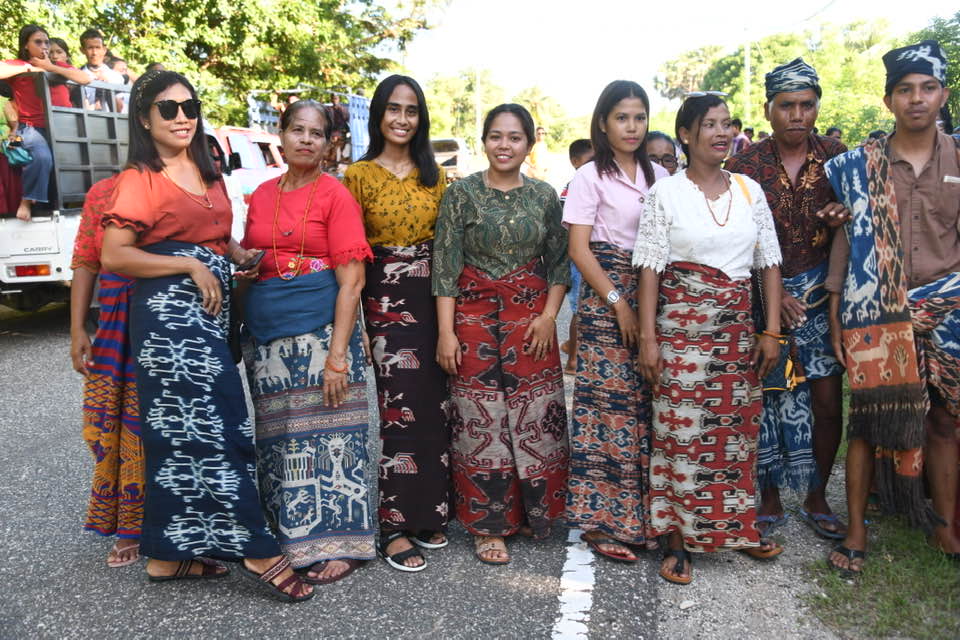
The talk is free, and begins at 11:00 EDT/08:00 PDT, which is 16:00 BST, and you can register for it here.
******************************
